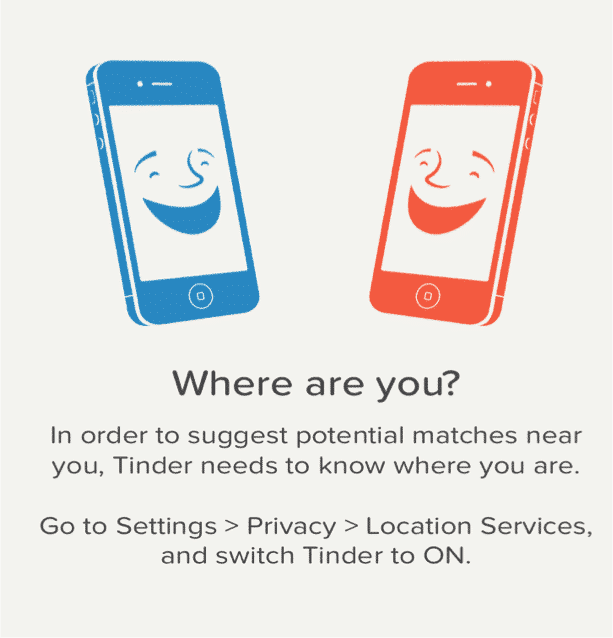
Dr. Bennett recently told me a story about her friend Abby’s first experience using the dating app Tinder. Her first date sounded perfect for a middle-aged woman new to the dating scene. Like her friends told her, she met her “match” for a quick drink. She knew better than to get into his car or reveal where she lived. They had a few drinks and then walked to a nearby restaurant for dinner. He was a gentleman, handsome and professional. She couldn’t wait to get home to tell her friends about him.
When she called my professor that night, Abby was beside herself excited about this guy. Dr. Bennett, quietly wondering if it was too good to be true, suggested that she Google him. A person’s digital footprint can reveal a lot. So, Abby Googled. You will never believe what she found out…
It turns out that the man of her dreams was everything he said he was. He was recently overseas as a military officer and had gotten out of a serious relationship several years before. But she also found out that the relationship ended with stalking, an attempted kidnapping, and years in federal prison. Her night went from fantasy to nightmare in a few keystrokes.
Today’s GKIS article reveals what every parent needs to know about the famous hook-up app recently turned dating app, Tinder.
With the rise of screen technology in full effect, the dating game has changed forever. Instead of going out to meet people, many teens and adults rely on dating apps to potentially meet their future soul mates. Or are they just looking for a casual hook up? This new hook up culture revolves heavily around the dating app, Tinder.

What is Tinder?
Tinder is a free dating app that you can use either on your mobile device or home computer. After signing up, you can connect with Facebook to merge your mutual friends, interests, and pictures with the Tinder app. There is a new feature to simply log in with a phone number. Tinder uses your location to match with other user’s close in proximity. If interested in one’s profile, users have the option to either “swipe right” which is a “go” or “swipe left” which indicates a “no.” In other words, play or pass. Once users are matched, meaning they both swiped right on each other’s profile, they can begin a conversation – whether it’s gifs (animated or static images) or messages.
What are Tinder’s popular features?
- When linking Facebook to Tinder, you have access to a network of friends whom can potentially share similar interests.
- The app works off of your geographic location, giving you an option to find matches within a specific radius. The user can match with people as close to 1 mile away and as far as 100 miles away. There is a setting where you can choose the maximum distance you prefer to swipe from.
- Users can edit their profile and select certain photos, create a personal bio, and insert personal demographic information they would like to share.
- In order to search for matches, users swipe through profiles until they are matched with another user. Once matched, users have the option to message or keep swiping through other profiles.
- Users can exchange messages, reactions, and gif’s which disappear after 24 hours. Users also have the ability to like a message sent from another user. Sending a reaction to one of your matches is a new feature on snapchat. Reactions look like a bigger emoji that moves and takes up most of the screen. The reactions include sending a shooting heart, a constant laughing face, clapping hands, a jumping cocktail drink, and an eye roll. (They do add new reactions randomly).

What is included in the personal profile?
- The first thing that appears on one’s personal profile is your photo. It also gives an option to swipe through the other photos posted on the account.
- Underneath the photo, it shows the user’s name and age. Depending on the user’s privacy preferences, it may also show one’s gender, interests, photos from Instagram, education and job details, a chosen anthem from Spotify, and one’s distance from your location.
What are the privacy options?
- Although Tinder is connected to Facebook, Tinder does not have authorization to post anything to one’s Facebook page.
- The information entered to sign up for Tinder can be hidden from other users. This includes e-mail address, home address, phone number, and birthday.
- When managing privacy options, users can opt to upgrade to Tinder Plus in order to hide their age and location to others.
How long has it been around and how popular is it?
Tinder was launched in 2012 by developer Sean Rad, Jonathan Badeen Justin Mateen, Joe Munoz, Whitney Wolfe and Chris Gylczynski. The app has been growing in numbers ever since. “Research shows there are 50 million active users who check their Tinder accounts up to 11 times per day (Claire, 2017).”
What are the risks for use?
Cyberbully potential:
- Other Tinder users can send threatening/cruel messages or offensive pictures
- Fake accounts and impersonation.
- Users can become desperate for likes and matches, potentially affecting self-perception and self-esteem.
Making poor decisions:
- There is a temptation to participate in casual hookups that can potentially lead to a unsafe sex and victimization.
- Since location plays a huge role in this app, it is easy for online predators to target Tinder users.

What are the protection features?
- If a user is sending inappropriate messages or images, there is an option to un-match with them and this disallows them to contact you.
- You have the option to upgrade to Tinder Plus, which allows you to hide location and age.
- There is also an option to turn-off the option to show your profile on Tinder.

Thank you to CSUCI student Nicole Hunnicutt for co-authoring this article. One thing no parent wants to think about is how predators use social media to target victims for sex trafficking. Most of us think this is the kind of thing that only happens to vulnerable youth in poor countries. Unfortunately, children and teens are victimized in most American towns with families in every income level. All it takes is a cunning predator and a kid with a screen. To take safety measures today to Get(your)KidsInternetSafe, check out this article on how sex traffickers use social media to recruit victims.
I’m the mom psychologist who will help you GetKidsInternetSafe.
Onward to More Awesome Parenting,
Tracy S. Bennett, Ph.D.
Mom, Clinical Psychologist, CSUCI Adjunct Faculty
GetKidsInternetSafe.com
Works Cited
Claire, M. (2017, February 21). Tinder: The Online Dating App Everyone’s Talking About. Retrieved March 02, 2017, from http://www.marieclaire.co.uk/life/sex-and-relationships/tinder-the-online-dating-app-that-everyone-s-talking-about-112522
What is Tinder? Parent App Guide (Video) – SafeSmartSocial. (2017, February 15). Retrieved February 22, 2017, from https://safesmartsocial.com/what-is-tinder-parent-guide/?utm_source=Safe%2BSmart%2BSocial%2BMailing%2BList&utm_campaign=57ce4c7f10-S3_Newsletter_3_Stars_2_23_17&utm_medium=email&utm_term=0_40b34a3ccb-57ce4c7f10-195659757
Vedantam, S., Klahr, R., Penman, M., Boyle, T., Schmidt, J., Connelly, C., & Cohen, R. (2017, February 14). Hookup Culture: The Unspoken Rules Of Sex On College Campuses. Retrieved February 26, 2017, from http://www.npr.org/2017/02/14/514578429/hookup-culture-the-unspoken-rules-of-sex-on-college-campuses
Don't worry, we will never spam you.










